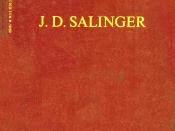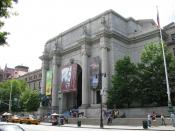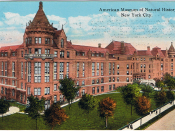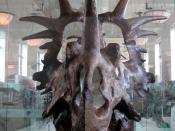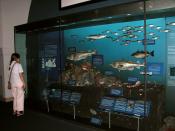Holden Caulfield, the main character and narrator of J.D. Salinger's The Catcher in the Rye, is a sixteen year old boy who on the edge of the cliff separating childhood from adulthood. Holden is a very self-conscious and unique individual, who often finds himself detached from the rest of society. As a result, Holden's life is full of loneliness. He finds the hypocrisy and ugliness of the world around him unbearable and uses his cynical demeanor to protect himself from the pain and disappointment of the adult world. In the novel, Salinger uses the symbols of Holden's red hunting hat and the Museum of Natural History to express the themes of loneliness and self-conscious isolationism.
Holden's red hunting hat is a key symbol throughout the novel of his self-conscious isolation from other people and his desire to be different from the world around him. The red hunting hat can represent an escape, or alter ego for Holden throughout the novel.
Whenever he feels the least bit insecure, he puts on his red hat and continues to stumble through life. At the same time, the hat can seem almost outlandish and bizarre. Holden is very self conscious about the hat and he only wears it when he is in a secluded place or around people he does not know. As Holden is wondering through New York City, he says, "I took my old hunting hat out of my pocket while I walked and put it on. I knew I wouldn't meet anybody that knew me, and it was pretty damp out." He is constantly aware of the hat's presence and always lets readers know when he is wearing it and when he is not.
The Museum of Natural History is a symbol in the novel of everlasting existence and a lack of change. Holden enjoys looking at the displays because they are frozen and unchanging, unlike himself. The Museum of Natural History appeals to Holden in the novel because it represents a world that never changes. Everything is simple, understood, and everlasting. Holden is overwhelmed by the unpredictable changes he experiences in the world. Holden quotes that "The best thing, though, in that museum was that everything always stayed right where it was. Nobody'd move ⦠Nobody'd be different. The only thing that would be different would be you." It troubles Holden that he has changed every time he returns to the museum, while the displays remain exactly the same. The museum presents Holden with a world and vision of life he can understand. Holden longs and wishes to live in a world like the museum: frozen, silent, and always the same.
As the novel progresses, we begin to slowly realize that Holden's isolation is his way of protecting himself from society. He uses his isolation to prove that he is better than everyone around him. As a result, he feels that he is superior to interacting with other people. In reality, Holden is confused and overwhelmed by interacting with others. He uses his cynical and jaded attitude to mask the insecurities and phoniness that plague his everyday existence. Holden's alienation can clearly be seen as the major cause of his pain and conflict throughout the novel. He frantically searches for human connection and love, but his protective wall of superiority and alienation prevent him from finding such an intervention. Holden's loneliness and isolation are the source of what little stability he has left in his life. They are both the source of his greatest strength and his greatest weakness. Holden desperately depends on his alienation, but in the end it destroys him.
http://en.wikipedia.org/wiki/The_Catcher_in_the_Ryehttp://www.enotes.com/catcher-in-the-rye/http://www.sparknotes.com/lit/catcher/
